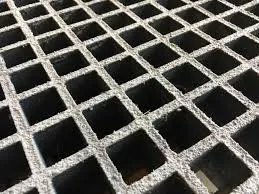
-
 Afrikaans
Afrikaans -
 Albanian
Albanian -
 Amharic
Amharic -
 Arabic
Arabic -
 Armenian
Armenian -
 Azerbaijani
Azerbaijani -
 Basque
Basque -
 Belarusian
Belarusian -
 Bengali
Bengali -
 Bosnian
Bosnian -
 Bulgarian
Bulgarian -
 Catalan
Catalan -
 Cebuano
Cebuano -
 China
China -
 China (Taiwan)
China (Taiwan) -
 Corsican
Corsican -
 Croatian
Croatian -
 Czech
Czech -
 Danish
Danish -
 Dutch
Dutch -
 English
English -
 Esperanto
Esperanto -
 Estonian
Estonian -
 Finnish
Finnish -
 French
French -
 Frisian
Frisian -
 Galician
Galician -
 Georgian
Georgian -
 German
German -
 Greek
Greek -
 Gujarati
Gujarati -
 Haitian Creole
Haitian Creole -
 hausa
hausa -
 hawaiian
hawaiian -
 Hebrew
Hebrew -
 Hindi
Hindi -
 Miao
Miao -
 Hungarian
Hungarian -
 Icelandic
Icelandic -
 igbo
igbo -
 Indonesian
Indonesian -
 irish
irish -
 Italian
Italian -
 Japanese
Japanese -
 Javanese
Javanese -
 Kannada
Kannada -
 kazakh
kazakh -
 Khmer
Khmer -
 Rwandese
Rwandese -
 Korean
Korean -
 Kurdish
Kurdish -
 Kyrgyz
Kyrgyz -
 Lao
Lao -
 Latin
Latin -
 Latvian
Latvian -
 Lithuanian
Lithuanian -
 Luxembourgish
Luxembourgish -
 Macedonian
Macedonian -
 Malgashi
Malgashi -
 Malay
Malay -
 Malayalam
Malayalam -
 Maltese
Maltese -
 Maori
Maori -
 Marathi
Marathi -
 Mongolian
Mongolian -
 Myanmar
Myanmar -
 Nepali
Nepali -
 Norwegian
Norwegian -
 Norwegian
Norwegian -
 Occitan
Occitan -
 Pashto
Pashto -
 Persian
Persian -
 Polish
Polish -
 Portuguese
Portuguese -
 Punjabi
Punjabi -
 Romanian
Romanian -
 Russian
Russian -
 Samoan
Samoan -
 Scottish Gaelic
Scottish Gaelic -
 Serbian
Serbian -
 Sesotho
Sesotho -
 Shona
Shona -
 Sindhi
Sindhi -
 Sinhala
Sinhala -
 Slovak
Slovak -
 Slovenian
Slovenian -
 Somali
Somali -
 Spanish
Spanish -
 Sundanese
Sundanese -
 Swahili
Swahili -
 Swedish
Swedish -
 Tagalog
Tagalog -
 Tajik
Tajik -
 Tamil
Tamil -
 Tatar
Tatar -
 Telugu
Telugu -
 Thai
Thai -
 Turkish
Turkish -
 Turkmen
Turkmen -
 Ukrainian
Ukrainian -
 Urdu
Urdu -
 Uighur
Uighur -
 Uzbek
Uzbek -
 Vietnamese
Vietnamese -
 Welsh
Welsh -
 Bantu
Bantu -
 Yiddish
Yiddish -
 Yoruba
Yoruba -
 Zulu
Zulu
frp pipeline
Exploring FRP Pipeline Technology A Modern Solution for Efficient Fluid Transport
Fiberglass Reinforced Plastic (FRP) pipeline technology has emerged as a groundbreaking solution in the field of fluid transportation. With its unique blend of lightweight materials and significant strength, FRP pipelines offer numerous advantages over traditional metal and plastic piping solutions. In this article, we will delve into the characteristics, benefits, and applications of FRP pipelines, demonstrating why they are becoming the preferred choice for many industries.
One of the most notable features of FRP pipelines is their impressive strength-to-weight ratio. Made from a combination of fiberglass and resin, these pipes are not only lightweight but also extremely durable. This characteristic facilitates easier installation and transportation, reducing labor costs and time. Furthermore, the corrosion-resistant properties of FRP make it suitable for transporting aggressive chemicals and wastewater, ensuring longevity and reliability in a variety of conditions.
Exploring FRP Pipeline Technology A Modern Solution for Efficient Fluid Transport
The versatility of FRP technology allows for a wide range of applications across various sectors. In the oil and gas industry, for instance, FRP pipelines are used for transporting crude oil, natural gas, and refined products. The resistance to corrosion from harsh chemicals is a decisive factor in this sector, where pipes are often exposed to challenging environments. Similarly, the water treatment industry has embraced FRP pipelines for their ability to withstand harsh environmental conditions and minimize maintenance costs.
frp pipeline

Moreover, FRP pipelines are gaining traction in the construction sector, particularly in civil engineering projects where lightweight materials are beneficial. Their use in municipal water systems, sewage systems, and drainage solutions exemplifies their adaptable nature. The flexibility of FRP also allows for the creation of custom shapes and sizes, accommodating specific project requirements without compromising on integrity or performance.
A significant advantage of FRP pipelines is their low thermal conductivity. This property minimizes heat losses in applications requiring temperature control, such as in the chemical processing industry. It also helps in reducing the chances of condensation, which can lead to pipeline corrosion over time. The inherent insulation properties of FRP make it an excellent choice for transporting any heated fluids, contributing to energy efficiency.
Cost-effectiveness is another compelling reason to consider FRP pipeline technology. Although the initial investment may be higher compared to traditional materials, the long-term savings associated with reduced maintenance, lower installation costs, and a longer lifespan make it financially appealing. Industries that rely heavily on pipeline systems can reap significant rewards over time, justifying the upfront expenditure.
As we look to the future, the development and adoption of advanced composite materials will further enhance FRP pipeline technology. Innovations in manufacturing processes, such as automated fabrication techniques, will drive down costs and improve quality. As sustainability becomes a core consideration across industries, the demand for environmentally friendly materials like FRP is set to rise.
In conclusion, FRP pipeline technology represents a significant advancement in the field of fluid transport. Its combination of strength, lightweight characteristics, corrosion resistance, and versatility make it a formidable competitor to traditional piping solutions. As industries strive for efficiency and sustainability, the adoption of FRP pipelines is likely to continue to grow, promising a future where transportation of fluids is not only more effective but also environmentally conscious. Embracing this technology could well be the key to solving many of the challenges faced by modern infrastructure, solidifying its role as a pivotal component in the evolution of fluid transportation systems.









